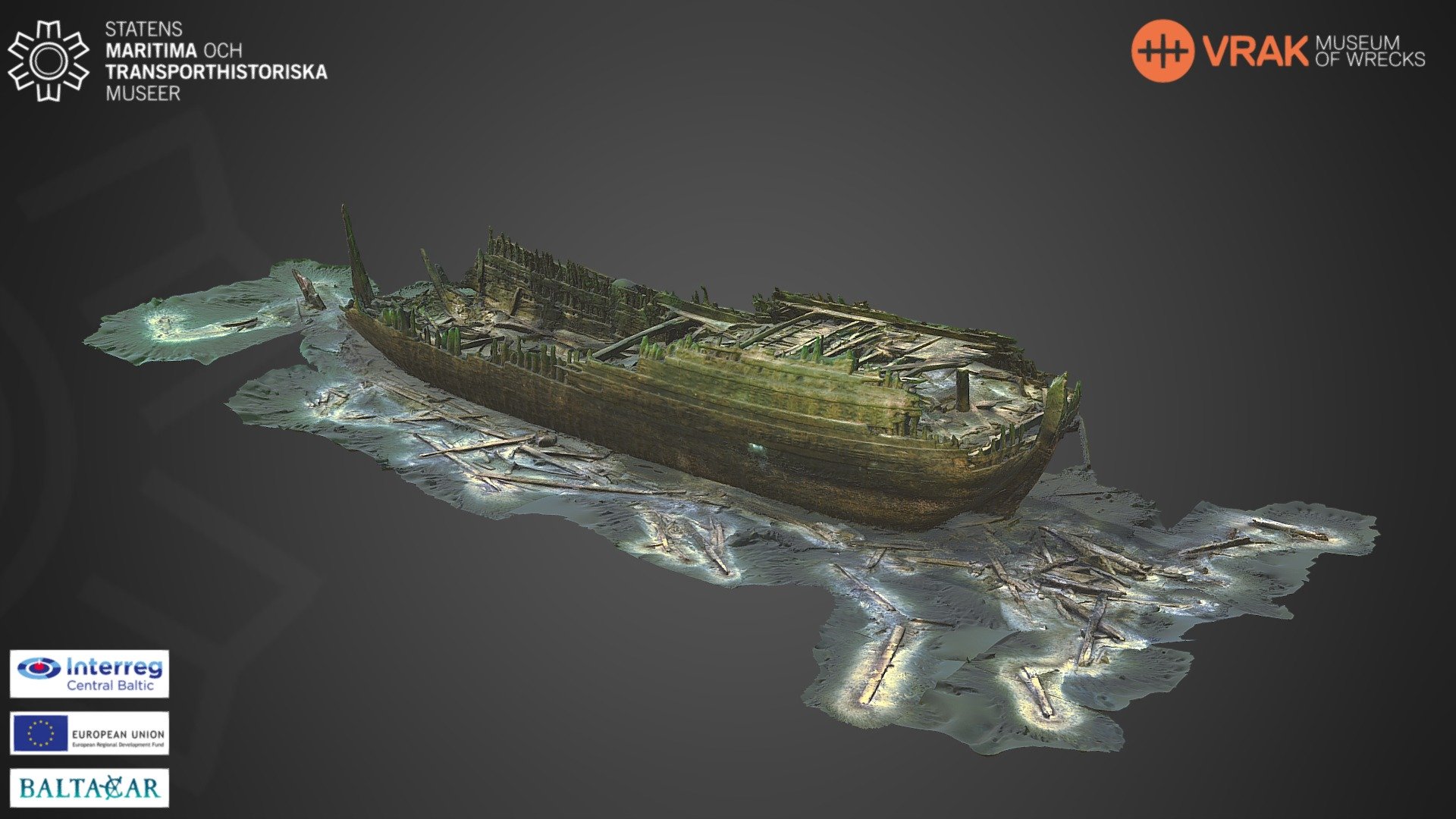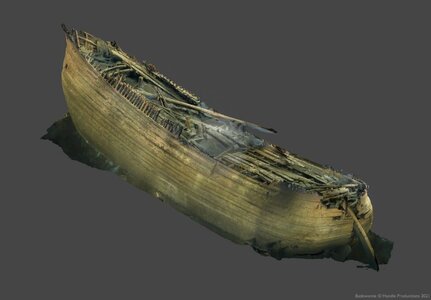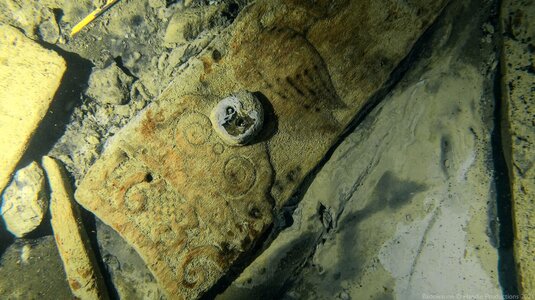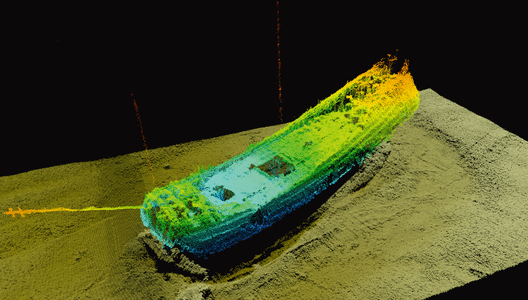For a long time I already want to build a Dutch fluyt and had been looking for the best possible candidate.
The shape of the fluyt is extraordenary and directly recognizable with its bollow stern, the Jelo of ships. It was the workhorse of the 17th century when the Dutch dominated shipping in the Western world. But proper sources of fluyts are scarse most probably she was so "standard" in those days, like we have posters and books of a Lamborghini Countach but not of a Hyundai Pony.
Recently Hans @Kolderstok posted a detailed history of the fluyt while launching his very nice kit of a Dutch fluyt, which you can find here.
First target was the ship Anna Maria. Anna Maria was a large 130 feet fluyt build in Amsterdam in the late 17th century for a group of Swedish shipowners from Stockholm. She sailed regularly between Sweden and Portugal with iron ore, copper & wood and on her way back with salt and wine. She was a fluyt of the type called a straetsvaerder a larger fluyt with a beakhead and cannons as she had to defent herself when passing the English channel.
In the beginnin of the 18th century she became ice bound in the port of Dalaro Sweden as the winter season started ealry that year. A small crew of just a view people stayed onboard the keep the ship safe during the winter. Let's put it mildly they did a louzy job, on one night they all went to the local pub and left on the fire onboard and that ended with a big bang. We now have a shipwreck of here at the bottom of Dalaro harbour. Based on the know data from the ship and the story Cor Emke made a set of drawings two decades ago. These drawings I got from Ab @Ab Hoving for which he mentioned that they were not correct. The last 10-15 years the wreck site was further researched and the ship was 3 D scanned these 3D models you can find here.

 sketchfab.com
sketchfab.com
I have been comparing the lines of the Emke drawing with the 3D model and the shape of the hull is indeed different, maybe a great project for future research.
I went on and was looking for a ship wreck which could be build into a model, trying to get as close as possible to the original.
Now there are two remaining candidates both Dutch fluyts from the design houthaler (Wood carrier). These are fluyts without a beakhead and no cannon because they sailed between the Netherlands and the Baltic which was considered as a safe area.
The first candidate is the wreck recently found by the Baddewanne group in Finland.
You can find all her data on the baddewanne website.
 badewanne.fi
badewanne.fi

She was a fluyt build in 1636 and probably called Swan, she here her upper stern.

She is nearly complete and would be an interesting candidate, but there is not enough drawing work publicly available of this ship yet.
So the final candidate is another fluit which is at 130 mtr depht in the middle of the baltic. and from this ship there is a lot of info. There is a documentary made, drawings are made which are based on full 3D scnning of the ship. This is what you really can call a Disney ship wreck, sitting at tghe bottom with her masts stil standing.
This ship was fully documented by Niklas Eriksson who is also involved in the Baddewanne find. Also our forum member @fred.hocker took part in this "Ghost ship" project.
Very handy for your reserach is the site Academia.edu were you can find a lot of research about shipwrecks etc etc.

For the reconstruction of my ship model I make use of the publicly published papers and drawing of Niklas Eriksson and of the Delftship models and knowledge and help of Ab Hoving. But more on that in a later post when I will discuss the creation of the model step by step.
The shape of the fluyt is extraordenary and directly recognizable with its bollow stern, the Jelo of ships. It was the workhorse of the 17th century when the Dutch dominated shipping in the Western world. But proper sources of fluyts are scarse most probably she was so "standard" in those days, like we have posters and books of a Lamborghini Countach but not of a Hyundai Pony.
Recently Hans @Kolderstok posted a detailed history of the fluyt while launching his very nice kit of a Dutch fluyt, which you can find here.
New design - 17th Century Fluytschip - Kolderstok
This is my introduction of a new kit we (=Kolderstok) have developped in the last two years. It is a 17th century Fluytschip, or Fluit. When you translate Fluit into English you get flute. Where the name fluit is derived from is not really known, but in general you can say that the shape of...
shipsofscale.com
First target was the ship Anna Maria. Anna Maria was a large 130 feet fluyt build in Amsterdam in the late 17th century for a group of Swedish shipowners from Stockholm. She sailed regularly between Sweden and Portugal with iron ore, copper & wood and on her way back with salt and wine. She was a fluyt of the type called a straetsvaerder a larger fluyt with a beakhead and cannons as she had to defent herself when passing the English channel.
In the beginnin of the 18th century she became ice bound in the port of Dalaro Sweden as the winter season started ealry that year. A small crew of just a view people stayed onboard the keep the ship safe during the winter. Let's put it mildly they did a louzy job, on one night they all went to the local pub and left on the fire onboard and that ended with a big bang. We now have a shipwreck of here at the bottom of Dalaro harbour. Based on the know data from the ship and the story Cor Emke made a set of drawings two decades ago. These drawings I got from Ab @Ab Hoving for which he mentioned that they were not correct. The last 10-15 years the wreck site was further researched and the ship was 3 D scanned these 3D models you can find here.

Anna Maria - Download Free 3D model by SWEDISH NATIONAL MARITIME AND TRANSPORT MUSEUMS (@maritima)
In Dalarö harbour, close to Stockholm, lies the wreck of the flute ship Anna Maria on 21 meters depth. A flute was a Dutch type of merchant ship who could take a heavy cargo. The ship was built in 1694 and named after the wife of one of the co-owners. It has had an interesting story, and at one...
I have been comparing the lines of the Emke drawing with the 3D model and the shape of the hull is indeed different, maybe a great project for future research.
I went on and was looking for a ship wreck which could be build into a model, trying to get as close as possible to the original.
Now there are two remaining candidates both Dutch fluyts from the design houthaler (Wood carrier). These are fluyts without a beakhead and no cannon because they sailed between the Netherlands and the Baltic which was considered as a safe area.
The first candidate is the wreck recently found by the Baddewanne group in Finland.
You can find all her data on the baddewanne website.
“The Swan” – 1636 – Badewanne.fi

She was a fluyt build in 1636 and probably called Swan, she here her upper stern.

She is nearly complete and would be an interesting candidate, but there is not enough drawing work publicly available of this ship yet.
So the final candidate is another fluit which is at 130 mtr depht in the middle of the baltic. and from this ship there is a lot of info. There is a documentary made, drawings are made which are based on full 3D scnning of the ship. This is what you really can call a Disney ship wreck, sitting at tghe bottom with her masts stil standing.
This ship was fully documented by Niklas Eriksson who is also involved in the Baddewanne find. Also our forum member @fred.hocker took part in this "Ghost ship" project.
Very handy for your reserach is the site Academia.edu were you can find a lot of research about shipwrecks etc etc.

For the reconstruction of my ship model I make use of the publicly published papers and drawing of Niklas Eriksson and of the Delftship models and knowledge and help of Ab Hoving. But more on that in a later post when I will discuss the creation of the model step by step.









